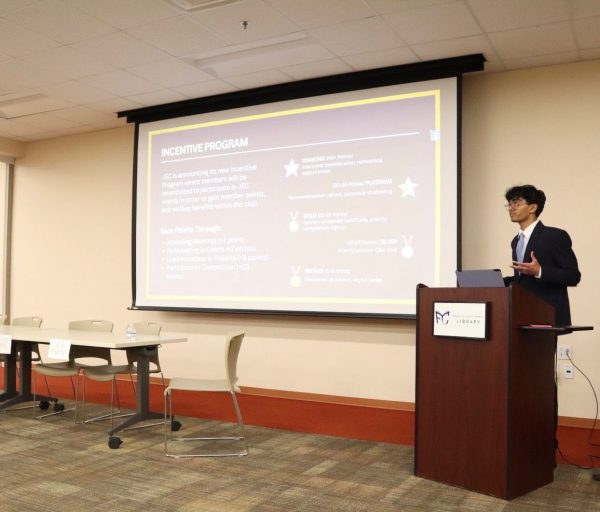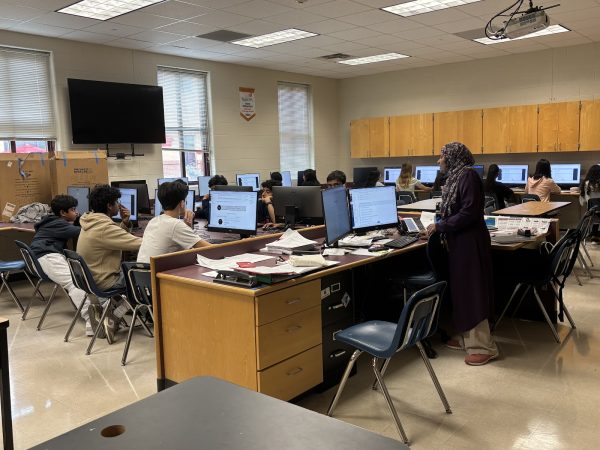Entomophagy: The Future Of Food?

(smartmeetings.com)
Entomophagy is the practice of eating insects. Some think it’s the future of food and a protein source for a more sustainable future. Insects are already consumed by billions of people worldwide, yet insect-eating is virtually non-existent in the United States, Canada, and several European countries. Overcoming the cultural bias against insect consumption is needed for entomophagy to become commonplace. But how did this stigma come to be? Why are people today so reluctant to try this environmentally sustainable food source?
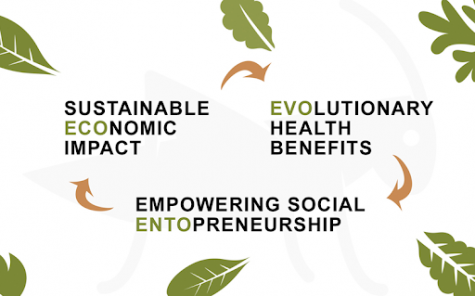
(eatinginsectsathens.org)
Presenters at the 2018 conference in Georgia, Eating Insects Athens, published papers last year discussing the stigma. The researchers theorize that Christopher Columbus’ expedition may have played a role in creating the modern American and European distaste for this potentially revolutionizing food source. When Columbus returned from the Americas, he used the insect-eating of the native inhabitants as an example of savagery and as justification for why they needed to be conquered and enslaved. And as pests threatened the struggling settlers’ harvests, further distaste of insects developed. Before this, even famous philosophers like Pliny the Elder fancied themselves to beetle larvae.
Many of us were programmed from a young age to fear insects, but insect-eating advocates argue that this thinking can be reversed. Kale, sushi, lobster, and even tomatoes were once scorned in some cultures, but today have become favorites in many people’s diets. With education and recognizing negative feelings towards eating insects, adults can avoid passing on this stigma to their children. The gradually increasing interest in entomophagy must be perpetuated through each generation.
By 2050, the world’s population is expected to reach or exceed 9 billion people, and the demand in agriculture is expected to increase by 70%. However, humans are quickly encroaching upon a food crisis if things do not change. Sprawling urban and industrial development is rapidly destroying some of Earth’s most arable land. Freshwater is in high demand in both agriculture and industry. Food producers need to increase their production per unit of area while using less freshwater or human food production will quickly reach a crisis point.
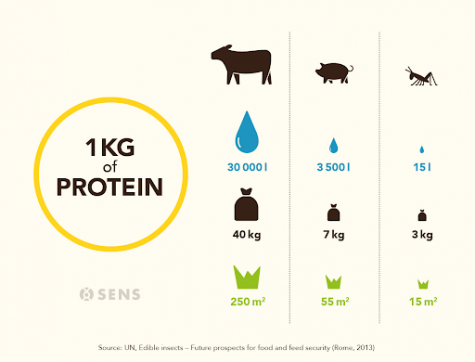
(United Nations)
Thus, insects present themselves as an essential alternative solution to conventional livestock and feed sources. Lots of research support the benefits of switching to an insect-based protein source. Whereas a cow needs 8 grams of food to gain a gram of weight, an insect only requires 2 grams of food to gain that same gram, making them much more efficient at transforming food waste into a protein source. Insects are often high in protein, vitamins, and minerals, emit fewer greenhouse gases, and require less water and space to grow.
An example of an industry already taking advantage of the efficiency of insects is aquaculture. Aquaculture in recent years has struggled to keep up with market demands and has used unsustainable sources of feed for the fish. Carnivorous fish, such as salmon and tuna, rely on diets of fishmeal and fish oil usually sourced from wild fish stocks. Approximately 20% of the world’s wild catch is used for fish feed. As such, this has severely reduced the populations of many species lower in the food chain from the wild—such as anchovies, mackerel, and krill—and removes an otherwise available food source to wild carnivorous species. Wild fish populations are quickly dwindling as a result, and many more aquatic species may go extinct if this practice continues. And this is where black soldier flies come in.
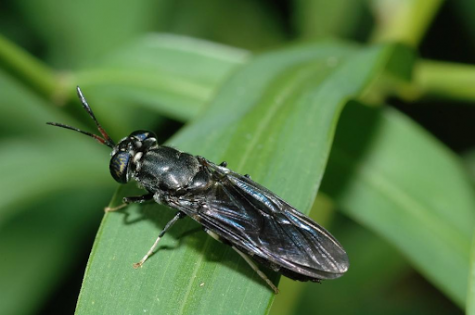
Adult soldier fly (gettyimages.com)
Black soldier fly has already been used in compost, waste disposal, and as feeders for exotic animals. They are efficient powerhouses with high protein content, fast-growth, and will eat almost anything, including human cadavers. Research has shown that salmon and trout raised on this larvae are just as healthy as fish raised on traditional feed. But this is only one of many promising applications of insects for a more sustainable world.
However, insects are not the end-all-be-all solution to the human food crisis. Scientists, during research of insect reproduction systems, have discovered that insects raised in relatively low densities are more likely to survive, grow bigger, and mature faster. More agricultural research needs to be done to design systems to overcome this hurdle, and as such, we are a long way off of growing insects that could feed the masses.
Humans have valued insects as a food source for thousands of years, as evidenced by written reports, fossilized feces, and mummified bodies. With the trend towards environmental sustainability, entrepreneurs are trying to put insects on the plate of the typical American. An example of this is Chapul, a company that sells cricket-based protein powder and cricket-based protein bars.
I’ve recently tried the practice of entomophagy out myself and made fajitas with bug as a protein instead of the traditional steak or chicken. I can say, with certainty, that bugs do not taste bad or like much at all. If more people were more willing to give it a try, I’d say that most will not find it repulsive as our cultural bias assumes. And with over 2,000 species of bugs to choose from, there are many possibilities for recipes.

Fajitas with mole crickets, crickets, grasshoppers, silkworm pupae, and weaver ants.
Specific regulations to ensure the quality and safety of edible insects still need to be put in place for consumers to feel more comfortable eating insects. The North American Coalition for Insect Agriculture has stated this as one of their goals and is currently working with regulators to make this a reality potentially. But in the meantime, try out some Chirps!
Your donation will help support The Lambert Post, Lambert High Schools student-run newspaper! Your contribution will allow us to purchase equipment and cover website hosting costs.




